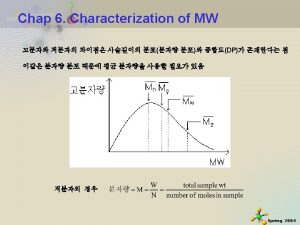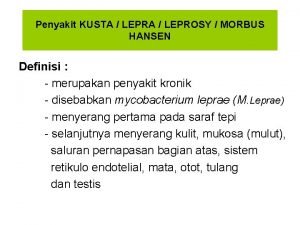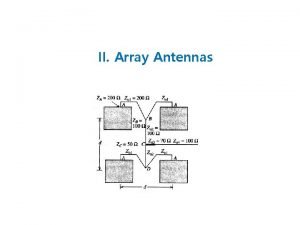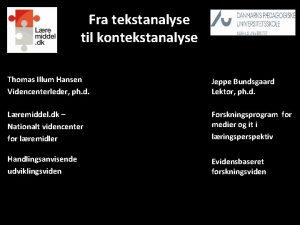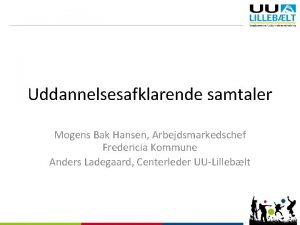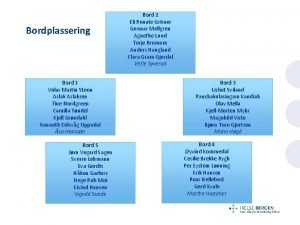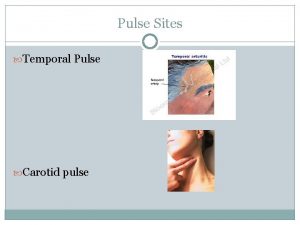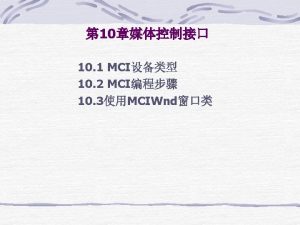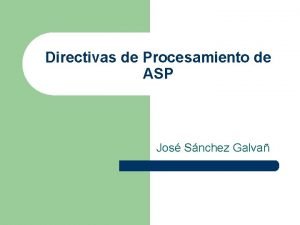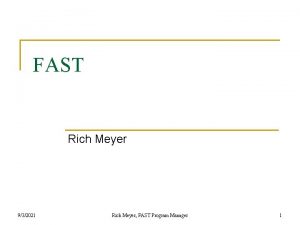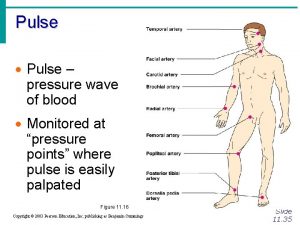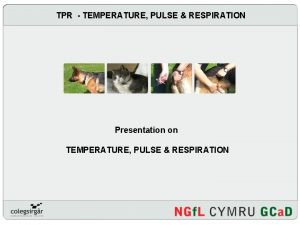MCI Galva Pulse Training Jessi Meyer Andrea Hansen



































- Slides: 35

MCI: Galva. Pulse Training Jessi Meyer Andrea Hansen Matt Drew

What is a Galva. Pulse? • The Galva. Pulse can measure current and resistivity by calculating galvanostatic pulse measurements. • When the galvanostatic pulse measurements are performed the Half-Cell Potential, the Corrosion Rate, and the ohmic Resistance can be determined, all in one operation. • Basically, the Galva. Pulse can tell you how much corrosion you have now and the potential for corrosion in the future.

Why Use a Galva. Pulse? • • • Determine Corrosion Rates Measure Half-Cell Potentials Predict the lifetime of a structure Proactively extend your structure’s lifespan Provide data to show that product is decreasing rate of corrosion compared to control

Corrosion Rate Estimations • Key parameters involved in corrosion rate estimations include the concrete material, rebar conditions, humidity, and temperature. • Using all of this information, lifetime predictions of the concrete can be made.

Scope • • Measuring the corrosion rate or half cell potential of reinforcement embedded in concrete. The galvanostatic pulse measurement technique is a fast polarization technique for determination of the actual corrosion rate at the time of testing.

Galva. Pulse Testing

Preparing for the Test • If rebar is not exposed or visible, it will need to be located using the reinforcement locator. – Hold reinforcement locator away from body in the air (away from concrete and other metals). – Turn on the reinforcement locator until sound is coming up and the red light is turned on. – Turn the knob slightly backwards until the sound disappears. – The locator is now adjusted to its maximum sensitivity. – Locate the centerline of the bars in each direction by means of the sound and the red indicator lamp.

Preparing for the Test • To gain access to rebar after it is located • Drill with the 18 mm drill bit to the reinforcement, on the centerline. • Continue drilling with the 12 mm drill bit sideward so the drill bit is touching the bar. • Blow the hole free from dust and insert the adapter bolt in the hole with the sloping edge of the bolt resting against the bar. • Turn the bolt firmly with the 10 mm Allen key for the threads of the bolt to cut into the bar.

Preparing for the Test • Wetting the Surface Per ASTM C 876 -91 • It is recommended to wet the surface where testing will take place three times every 15 minutes before testing will begin. • Wetting should be done uniformly at every test point on the grid.

Turning Galva. Pulse On • Turn on the Galva. Pulse by pressing On/Esc. – The Galva. Pulse has an automatic screen shut-off to save battery life. • If Idel is not on top of screen, select FORCE icon and press enter. • If Idel shows on top of screen, press Menu key.

Entering the Galva. Pulse Settings • Select SETTINGS • Select TIME • 10 seconds is the default setting for taking Galva. Pulse readings and should always be used • Press Enter

Enter Galvanic Pulse Current • Select SETTINGS • Select CURRENT • Range is 5 -400 μA. – Default is 25 μA, and is used for passive areas. – For active areas, use 80 -100 μA. – For VERY ACTIVE, a current up to 400 μA can be necessary to obtain a reasonable polarization. Always use as low of current as possible to minimize polarization. • Press Enter

Entering Rebar Settings • Select SETTINGS • Select REBAR • Enter DIAMETER in mm and press down • Enter LENGTH in mm and press down – Default is 70 mm, equal to the diameter of electrode (guard ring). • Press down and then Enter – Area will automatically calculate • Press Enter

Entering Guard Settings • Select SETTINGS • Select GUARD • Only turn off if not using guard ring sensor, i. e. rebar is cut at both ends. • If this is the case, you will also need to change the length in rebar settings. • Press Enter

Entering Grid Settings • • Select SETTINGS Select GRID Default settings will display If total number of test points is not known, use Default parameters. • Press Enter

Saving Settings • Select SETTINGS • Select SAVE • Press Enter

Creating New Data Files • There are two different data files that can be created: – Half-Cell Potential (HCP) Data Files are used when only the HCP is needed. – Galva. Pulse Data Files are used when both HCP and Pulse Readings are wanted.

Creating a New Data File • Select ACTION • Select “New HCP” or “New Pulse” and press Enter. • Select B Drive by using arrows. – B Drive is Cortec’s memory card • Press down arrow and create a file name • Press Enter when finished

Opening Existing Data Files • Select ACTION • Select “Load HCP” or “Load Pulse” and press Enter • Select drive on which file is stored • Find File Name • Press Enter to open file

Taking Measurements • Once surface has been completely prepared and dampened, connect all wires. • Ensure a proper connection of pliers to the exposed rebar. – Pliers may not make a complete connection to the metal surface. – Some sanding may be required if corrosion already exists on the rebar.

Taking Measurements • Wet sponges and insert smaller one into center hole. Attach other sponge to electrode head by mounting the holes in sponge around the three screws. • Place electrode on level concrete surface directly over the same exact rebar to which pliers are connected. • Ensure all three screws are resting against the surface. • Make sure there are no puddles of water.


Taking Measurements • Once the electrode is in place: – Press the arrow keys to change the coordinates of the measuring points (from start point to end point). – Press the M key to start the measurement. – Keep electrode completely steady while count measurement is being made

Taking Measurements • When pulse is finished, a graph will appear in the plot area. – A valid reading shows points increasing over time without a large scatter – A decreasing graph is a sign of a false reading • Repeat measurement, and if graph is still decreasing, adjust settings. – Repeat measurement if large scatter is shown

Trouble with Measurements • If data plot is decreasing, is a scatter, or you receive a pop up screen saying “Please make a new measurement”, repeat measurement in same location. • If several attempts are unsuccessful, testing parameters can be changed in SETTINGS.

Trouble with Measurements • If you are having trouble getting a valid reading, try the following steps, ONE AT A TIME, before retaking a measurement. – Move the electrode to a new spot a few centimeters away and try again – Check connection to rebar and make sure it is clean and tight – Re-wet surface, wait 10 minutes, and try again – Increase the current by a factor of two

A Good Measurement • If a nice, increasing, non-scatter plot is displayed after measurement is made: – Press right arrow to find the next measurement point – Repeat same steps for new point

Import Settings to Computer

Interpreting Measurements • The following are characteristics of corroding steel reinforcement: 1) -400 to -500 m. V for HCP (Ag/Ag. Cl) 2) 5 to 20 μA/cm 2 for Corrosion Current 3) 1 -4 KOhm for Electrical Resistance

Interpreting Measurements • The following chart is used to correlate corrosion current, corrosion rate, corrosion level and time to visible deterioration as shown.

Interpreting Measurements • The climate information for the day and weather history should also be included and taken into consideration of interpretation of measurements. One place weather history may be found is www. weatherunderground. com. • Half-Cell Potential (HCP) readings, visual inspections, and comparisons to control areas, etc. are also information that should be taken into consideration of interpretation.

Exiting the Program • Select ACTION • Select EXIT – It is safe to press the OFF button and leave the Galva. Pulse in this state. It will start with the same display the next time it is turned on. • Disconnect all wires and place components back into case. • Make sure sponges are removed from electrode to prevent corrosion, but do not seal wet sponges in plastic bag as they will become rotten. • If rings become corroded, they need to be grinded to a smooth finish using emery cloth.

Some FYIs • Changing batteries – Galva. Pulse contains two AA batteries and one 3 V battery • Do NOT change all three at the same time, for loss of data may occur • Calibration – Instrument should NOT be re-calibrated

Documentation • Documents – Laboratory Reports • Storage – The above referenced quality documents are stored in accordance with the (Document Control SOP) (\. . Reference. Documents QMSQuality. Records. Matrix. doc)

References • Manual “Galva. Pulse GP-5000 Instruction and Maintenance Manual”, German Instruments, Inc. , May, 2005. • Manual “Galva. Pulse™ Instruction and Maintenance Manual”, FORCE Technology, 2008 • Binder “Galva. Pulse Literature”, German Instruments, Inc. , July 2004
 Galva pulse
Galva pulse Jessi jacobsen
Jessi jacobsen Matau negirdziu girdziu nematau
Matau negirdziu girdziu nematau Andrea meyer muerte
Andrea meyer muerte Jump start triage system
Jump start triage system Tablero de resultados mci
Tablero de resultados mci Mci transformer corporation
Mci transformer corporation Vhass mci
Vhass mci Mci security systems
Mci security systems Cisp mci
Cisp mci Mci
Mci Hansen dataset
Hansen dataset The tail by joyce hansen
The tail by joyce hansen Hansen solubility sphere
Hansen solubility sphere Obligat
Obligat Loser beck guitar
Loser beck guitar Beck hansen enfermedad
Beck hansen enfermedad Siivi hansen
Siivi hansen Kasper fogh hansen
Kasper fogh hansen Lopsang jangbu sherpa
Lopsang jangbu sherpa Hansen woodyard end fire array
Hansen woodyard end fire array Heather hansen artist
Heather hansen artist Kontekstanalyse
Kontekstanalyse Strategic cost management hansen and mowen
Strategic cost management hansen and mowen Klasifikasi morbus hansen
Klasifikasi morbus hansen Maria jose hansen
Maria jose hansen Mogens bak hansen
Mogens bak hansen Elisabeth holm hansen
Elisabeth holm hansen Janne hedegaard hansen inklusion
Janne hedegaard hansen inklusion Hansen solubility sphere
Hansen solubility sphere Hansen jagannathan bound
Hansen jagannathan bound Dr ginger hansen
Dr ginger hansen Klasifikasi morbus hansen
Klasifikasi morbus hansen Slidetodoc.com
Slidetodoc.com Per martin steen
Per martin steen Ultimate bearing capacity
Ultimate bearing capacity













